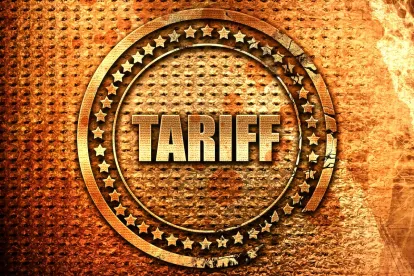On March 15, 2023, the U.S. International Trade Commission (ITC) released its report on the Economic Impact of Section 232 and 301 Tariffs on U.S. Industries. The report presents a balanced view of the economic impact of the tariffs. The ITC found that imports decreased, and domestic production increased with minimal increases in domestic prices because of the sections 232 and 301 tariffs.
Section 232 Tariffs Yield Positive Results for Domestic Producers but Downstream Production Decreased
Section 232 tariffs were proclaimed by President Trump on March 8, 2018, following an investigation led by the Secretary of Commerce under section 232 of the Trade Expansion Act of 1962 of the effects on the national security of imports of steel and aluminum. The ITC found the overall impact of section 232 tariffs on domestic producers have been positive, with the tariffs accounting for a relatively large portion of the decline in imports and a relatively small portion of the observed increase in prices. For example, section 232 tariffs contributed to lowering steel import volumes by 24% from 2018-2021. Domestic steel production increased by more than 5% in the same period, with capacity utilization at a 14-year high in 2021. In addition, the tariffs allowed domestic steel producers the following:
-
Operate more efficiently
-
Transition to higher value products and higher volume orders
-
Bring online approximately 20 million metric tons of new or restarted capacity
-
Announce investments of nearly $22 billion in production improvements.
The ITC estimates section 232 tariffs covered less than half of steel imports from 2018-2021, with the imports subject to tariffs decreasing as more countries have become exempt from the tariffs and more articles have become subject to exclusions.
The ITC found the impact of section 232 tariffs on downstream users has been largely negative but differs in magnitude across industries, with sales in many downstream industries closely tied to the overall economic environment. For example, the machinery and cutlery/hand tool manufacturing, automotive and construction industries experienced the largest effects of the steel tariffs. Those industries experienced production decreases up to nearly 3%. Although the tariffs resulted in small increases in domestic prices, other factors such as supply chain disruptions, a surge in energy prices, and the COVID-19 pandemic outweighed the tariffs in contributing to increasing prices. Rather than pay the increased price of imports due to the tariffs, many downstream industries shifted sourcing to domestic producers.
Section 301 Tariffs Almost Entirely Passed Through to Consumers
In 2018, following an investigation conducted pursuant to section 301 of the Trade Act of 1974, the U.S. Trade Representative determined that the acts, policies, and practices of the Chinese government related to technology transfer, intellectual property and innovation were unreasonable or discriminatory and burden or restrict U.S. commerce. The Trade Representative imposed additional ad valorem tariffs on an initial group (tranche) and three subsequent tranches of imported products originating in China. The four tranches of products subject to section 301 tariffs covered 13,591 HTS statistical reporting numbers comprising imports with an average 2016-17 value of $291.6 billion.
Due to the large number of industries affected by section 301 tariffs, the ITC focused on the aggregate impact on all directly affected industries and the estimated impacts on the ten most directly affected industries, defined as those industries with the highest volume of imports in 2016-17 of products covered by section 301 tariffs. The ITC found that in the aggregate, there was full “pass-through” of section 301 tariffs, indicating that the cost of section 301 tariffs have been borne almost entirely by U.S. importers. Chinese exporters have largely maintained the same prices and U.S. importers have absorbed the costs of the tariffs through a combination of less-favorable margins for sellers and higher prices for consumers or downstream buyers. Section 301 tariffs resulted in a 13% drop in the value of U.S. imports from China on average. For the ten industries with the highest value of imports covered by section 301 tariffs, it is estimated the value of U.S. production rose between 1.2% and 7.5% percent in 2021 because of section 301 tariffs.
Considerations for U.S. Businesses
As detailed in the ITC’s report, sections 232 and 301 tariffs affect domestic producers and downstream industries differently. Companies currently importing may benefit from seeking domestic suppliers. Domestic producers may choose to object to exclusion requests submitted by importers for goods produced domestically. All U.S. businesses need a comprehensive, risk-based trade strategy that considers the costs and benefits of alternative sourcing, customs classification analysis, and supply chain due diligence. While a pending court case challenges the application of the section 301 duties and Congress may revisit whether to reform the section 232 exclusion process, the likelihood is that the existing duties will remain in place for the foreseeable future and businesses should plan accordingly.




 />i
/>i
